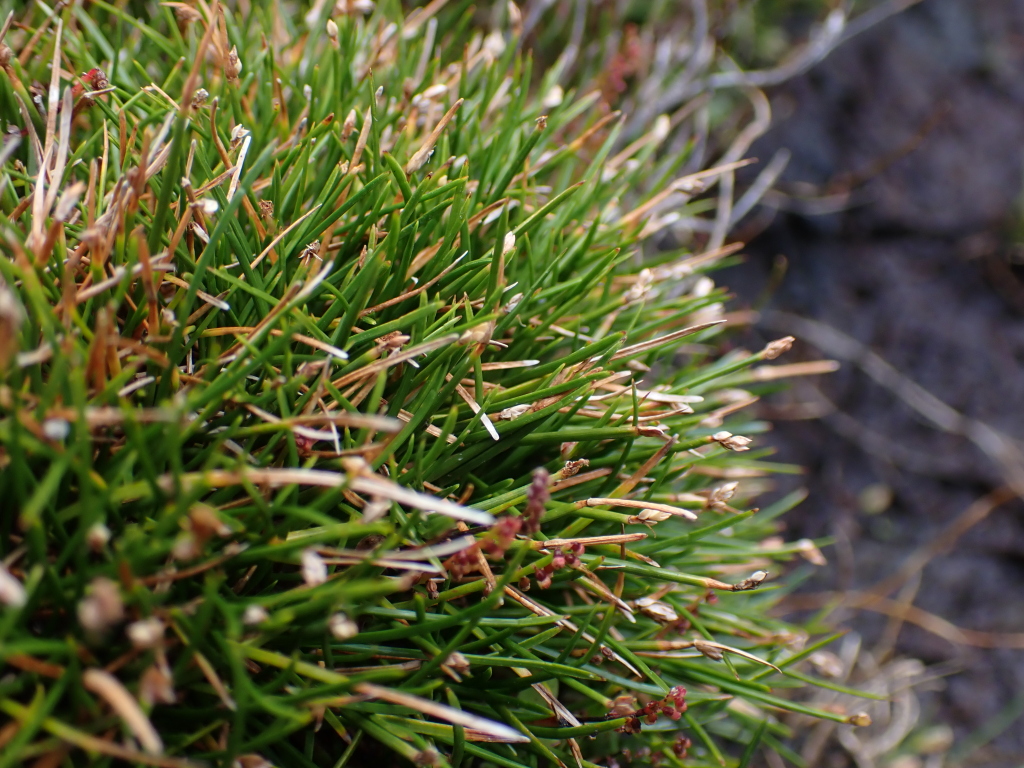Isolepis aucklandica
Hook. f.Small clump-forming perennial, with short filiform rhizome. Culms filiform, to 12 cm high. Leaves reduced, shorter than culms. Spikelet 1(–2), 1–2.5 mm long; involucral bract much longer than spikelet, caducous, with base partially enclosing spikelet; glumes acute, not or scarcely mucronate, sides irregularly several-nerved, pale brown often dotted or tinged dark red-brown, deciduous, 1.2–2 mm long; stamens 3, rarely fewer in upper flowers; anthers 0.5–0.8 mm long; style 3-fid. Nut unequally trigonous, with angles acute, ellipsoid, minutely reticulate, shining, pale yellow to grey-brown, from two-thirds to three-quarters as long as glume, 0.8–1.5 mm long, 0.6–0.9 mm diam., often persistent on bare rachilla. Flowers summer.
EGU, HSF, HNF, MonT, VAlp. Also Qld, NSW, Tas. New Guinea, New Zealand, subantarctic islands. Rather common in and around alpine and subalpine bogs and streams, occasional in drier sites.
Characteristically, this species is found with the glumes and involucral bract fallen, leaving the nuts persistent on the bare axis of the spikelet.
Wilson, K.L. (1994). Cyperaceae. In: Walsh, N.G.; Entwisle, T.J., Flora of Victoria Vol. 2, Ferns and Allied Plants, Conifers and Monocotyledons, pp. 238–356. Inkata Press, Melbourne.
 Spinning
Spinning

